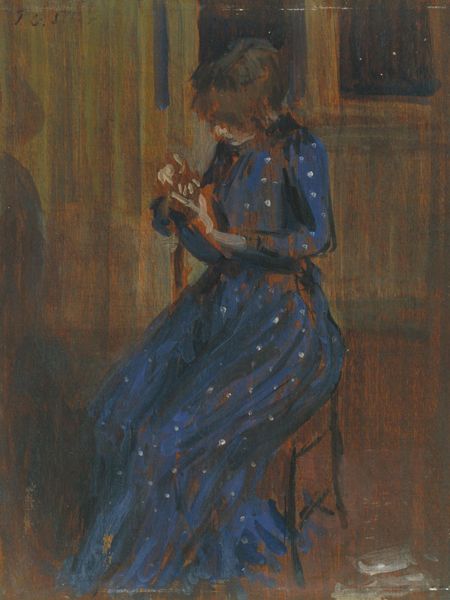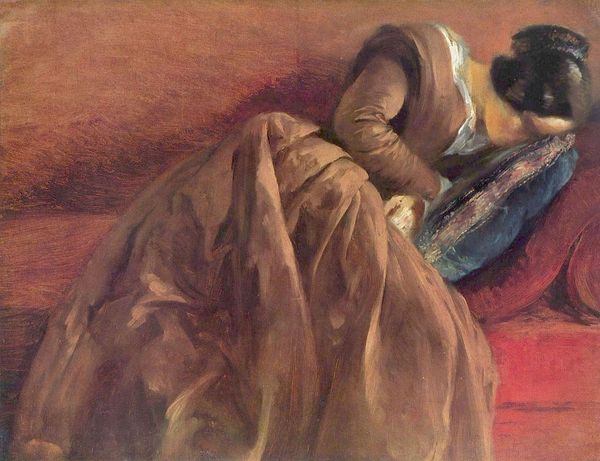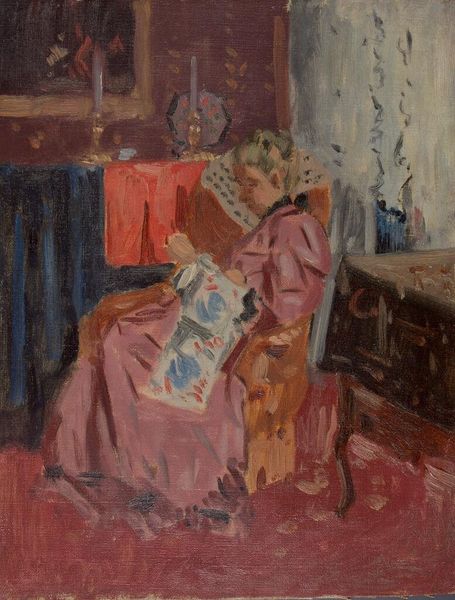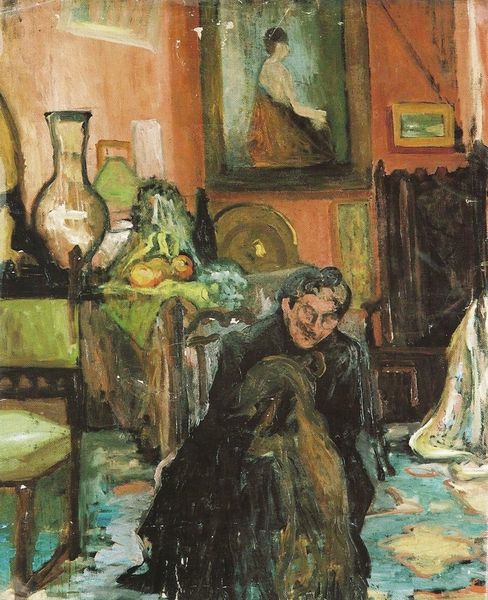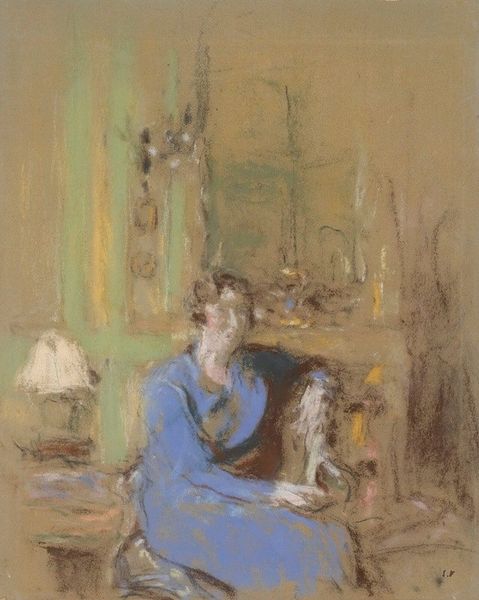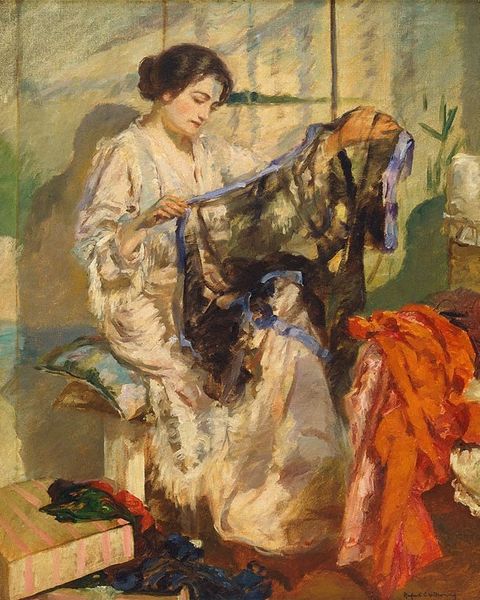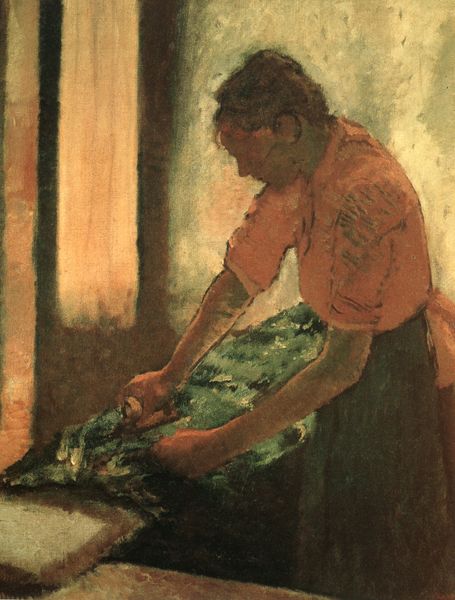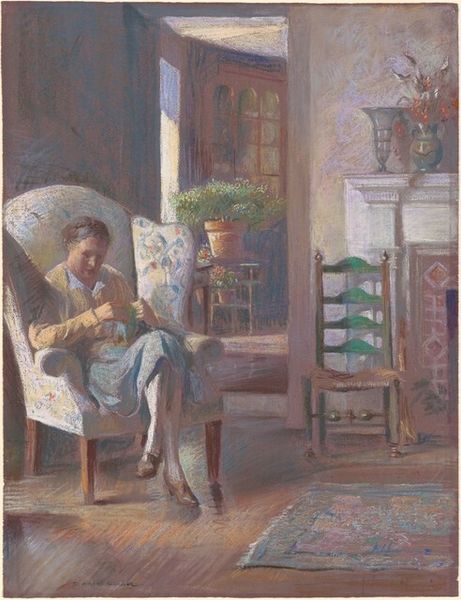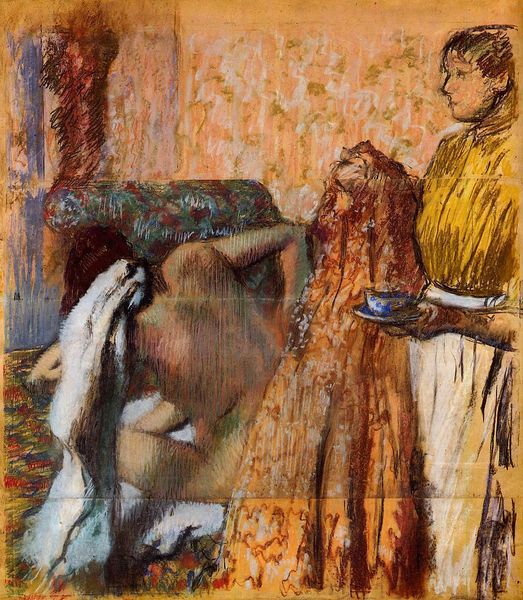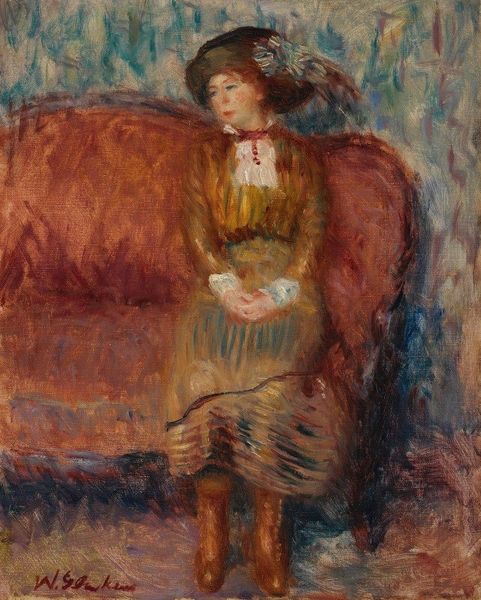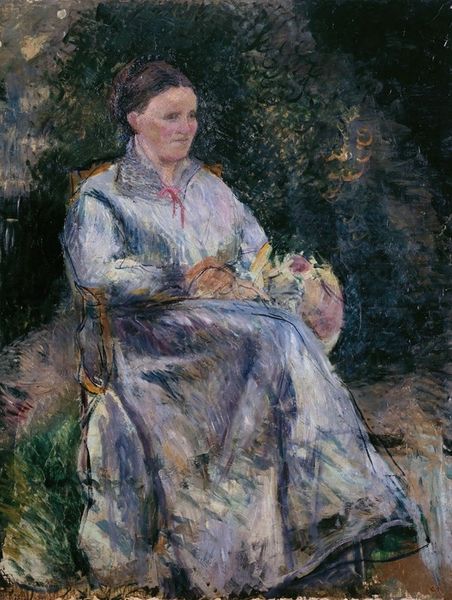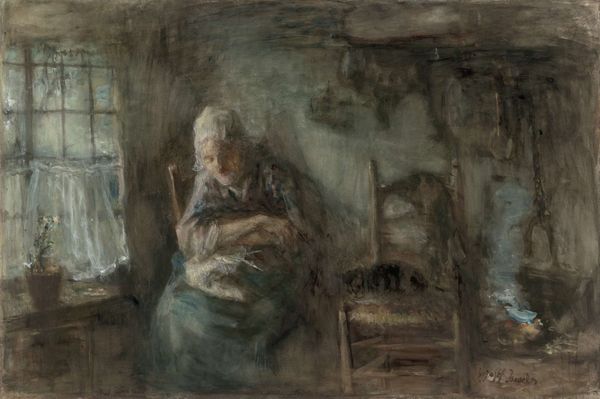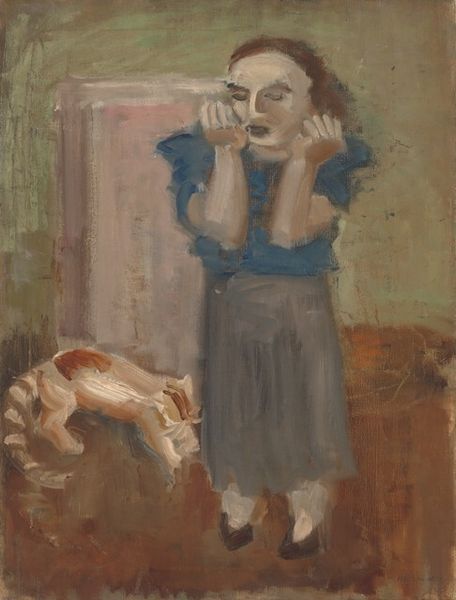
painting, oil-paint
#
figurative
#
painting
#
impressionism
#
oil-paint
#
figuration
#
oil painting
#
genre-painting
#
post-impressionism
#
watercolor
Copyright: Public Domain: Artvee
Curator: Edgar Degas’ “At the Milliner’s”, completed around 1881, offers us a glimpse into a world of Parisian fashion and female labor during the Belle Époque. Editor: The scene feels incredibly intimate, almost voyeuristic. The composition is fascinating; the eye is immediately drawn to the hands and the textures of the hats and fabrics. It's surprisingly muted. Curator: Absolutely. Degas was fascinated by capturing everyday life, and this work beautifully depicts the changing role of women in the late 19th century. It subtly gestures at the emergence of women into commerce and work. We should not forget the hats' artisanal construction: made with specific savoir-faire; this labor, usually domestic and invisible, here acquires social visibility. Editor: I am immediately curious about the making. These hats, they represent hours of work—cutting, shaping, stitching—and they signify consumer culture's obsession with embellishment. It shows the fruits of labor available for purchase. The painting also makes clear how material the consumer dreams can be! Curator: And consider the milliner herself. She's not just a saleswoman, but a skilled artisan. The composition cleverly places her examining a hat, implying both her critical eye and her engagement in the craft. I consider this a representation of an independent working woman in a transforming Paris. Editor: There is also an intriguing relationship here, between the materiality of fashion, class, and labor. A worker’s work generates the consumer desires. Curator: Exactly. It challenges traditional hierarchies within art and labor, elevating the mundane details of hat-making to a subject worthy of artistic exploration. Also, do not miss how it challenges patriarchy's expectations on woman's place and labor. Editor: Looking at it through a materialist lens underscores the craftsmanship and challenges notions of what constitutes high art versus mere craft. Curator: And by presenting this snapshot of daily life, Degas encourages us to reconsider our own perceptions and judgements about the working woman, consumer culture, and female solidarity at that time. It also challenges conventional art-historical depictions of women. Editor: Degas helps us rethink labor. Instead of a dehumanizing factory, it is located at a site of small artisanal production with social ties between producers and consumers. I am happy to find complexity, rather than the classic tale of woe!
Comments
No comments
Be the first to comment and join the conversation on the ultimate creative platform.
